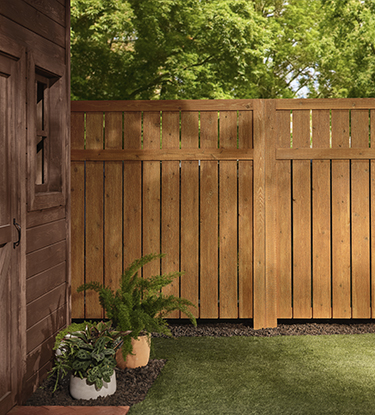The Ultimate Guide to Deck Discoloration
In the realm of home improvement projects, few tasks can change the look and long life of an outdoor space rather like deck discoloration. Whether you are a seasoned DIY lover or a home owner aiming to improve the elegance of your deck, recognizing the nuances of correct deck discoloration is important. From the essential action of deck prepping to selecting the right tarnish that complements your visual choices and environment problems, each element plays a crucial duty in accomplishing a professional coating. As we browse with the detailed process of deck staining, you will uncover important understandings that will not only boost the visual charm of your deck however additionally ensure its resilience for many years to come.
Importance of Deck Prepping
Correct deck prepping is important to make certain a effective and durable discoloration process. Prior to diving into tarnishing your deck, taking the time to prepare the surface adequately can make a considerable distinction in the last result.
After cleaning, it is crucial to permit the deck enough time to dry totally before waging the discoloration procedure. Wetness caught in the timber can stop the stain from correctly adhering, bring about a uneven and uneven coating. Additionally, check the deck for any loosened boards, nails, or screws that may require to be tightened or changed before tarnishing to ensure a smooth and risk-free surface area.
Putting in the time to prep your deck carefully can result in a perfectly tarnished deck that not only enhances the visual allure of your outside room yet also shields the timber, prolonging its lifespan.
Selecting the Right Spot
After completely preparing your deck surface area, the next important action is picking the ideal tarnish to accomplish both aesthetic improvement and long-lasting security. When choosing a stain for your deck, think about the sort of wood you are collaborating with, the preferred shade and surface, along with the degree of upkeep you agree to commit to in the future.
There are typically two major types of deck discolorations: oil-based and water-based. On the various other hand, water-based discolorations are a lot more eco friendly, dry faster, and discharge fewer smells.
Ultimately, the best tarnish for your deck will depend on your personal preferences, the environment in your location, and the amount of maintenance you are ready to embark on to maintain your deck looking its finest.
Proper Discoloration Application Techniques

Following, choose the right devices for the job. A roller, paintbrush, or sprayer can be utilized relying on individual choice and the dimension of the deck. When using the discolor, operate in small areas, adhering to the wood grain to ensure an even coat. Be mindful of drips and overlap each pass slightly to avoid unequal coloring. Allow the initial coat to dry totally before applying a 2nd layer if essential. Lastly, preserve the deck by consistently cleaning and reapplying tarnish as needed to keep it looking fresh and protected.
Preserving Your Tainted Deck
To maintain the appearance and toughness of your deck's tarnish, regular maintenance is necessary. Appropriate maintenance not just maintains your deck looking its best however likewise helps extend the life of the tarnish, protecting the wood from the elements. By remaining aggressive with maintenance, you can delight in a wonderfully tarnished deck for years to come.

Troubleshooting Common Discoloration Issues
Regular maintenance of your tarnished deck is vital not just for preserving its appearance and resilience yet likewise for dealing with usual staining problems that might emerge over time. Despite your best efforts, troubles like peeling off, cracking, or unequal color distribution can happen. One common issue is inappropriate preparation, such as stopping working to dry and tidy the deck appropriately before staining. This can bring about inadequate bond and early peeling. To troubleshoot, strip off the existing tarnish, clean the surface extensively, and allow it to dry entirely before restaining. One more frequent issue is over-application of stain, causing a thick, sticky layer that will not correctly completely dry or treatment. In this instance, remove excess discolor with a brush or towel and enable the deck to dry appropriately. In addition, if you see irregular coloring, it might result from improper application methods. To repair this, think about applying a second coat making use of regular strokes and guaranteeing even protection. By without delay determining and addressing these common discoloration problems, you can preserve a durable and stunning surface on your deck.

Conclusion
By extensively prepping the deck, selecting the right tarnish, using it properly, and routinely keeping it, you can make certain a fence staining companies franklin long lasting and attractive finish. Complying with these guidelines will help you accomplish a magnificent tarnished deck that you can enjoy for years to come.
Whether you are a seasoned DIY fanatic or a home owner looking to enhance the beauty of your deck, comprehending the subtleties of correct deck staining is important - pressure washing near me. As we navigate through the detailed process of deck discoloration, you will discover indispensable insights that will certainly not only raise the visual appeal of your deck but also guarantee its durability for years to come
Routine upkeep of your tarnished deck is essential not just for preserving its appearance and toughness but likewise for resolving usual staining problems that might arise over time. In this instance, remove excess discolor with a brush or cloth and permit the deck to dry effectively. By completely prepping the deck, selecting the appropriate discolor, applying it correctly, and frequently maintaining it, you can make sure a sturdy and lovely surface.